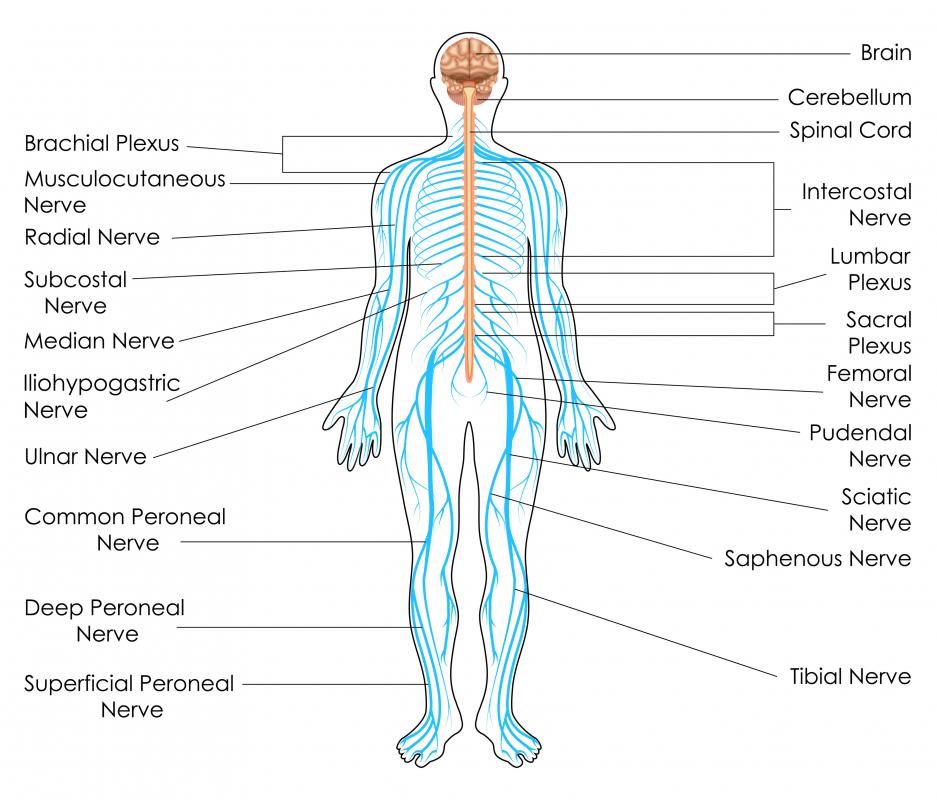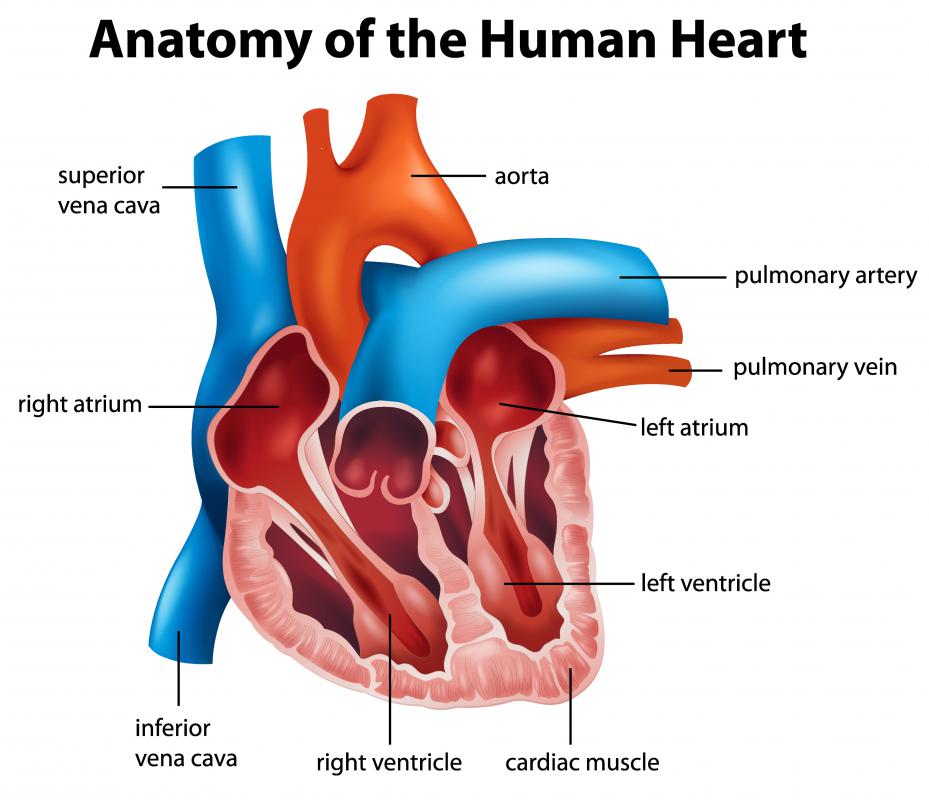At WiseGEEK, we're committed to delivering accurate, trustworthy information. Our expert-authored content is rigorously fact-checked and sourced from credible authorities. Discover how we uphold the highest standards in providing you with reliable knowledge.
What Is the Cardiac Plexus?
A cluster of nerves that surround and connect to the heart, the cardiac plexus is typically located at the base of the organ. It normally consists of a superficial section that is below where the main artery, or aorta, arches above the heart. The heart is divided into right and left halves. Major structures called vagus nerves and sympathetic trunks feature fibers, called the cervical and thoracic cardiac nerves, that feed into the plexus. Several nerve branches come together in the structure; these sometimes form the cardiac ganglion of Wrisberg, below the aorta.
The cardiac plexus provides a connection to the central nervous system, as part of the heart’s conduction system. Branches end near the sinoatrial node, which provides electrical pulses to control heart rhythm, and the atrioventricular node that serves as an electrical link between the heart’s atria and ventricles. The superficial part of the cardiac plexus is typically located near the aorta, while the right pulmonary artery is usually behind it. Nerve branches from here travel to deeper regions of the structure, as well as to part of the pulmonary plexus, a structure that is part of the nerve system of the lungs.

Generally located in front of where the trachea splits before reaching the lungs, the deep part of the cardiac plexus is formed by various nerve branches, including those from the larynx. The right half often has fibers that go in front of and behind the right pulmonary artery. Usually connected to the superficial section, the left half of the plexus of nerves typically has fibers that go into the left atrium of the heart.

Sympathetic fibers from the cardiac plexus can increase heart rate, control the force generated by the heart’s beating, as well as signal coronary arteries to widen. Also part of the involuntary, or autonomic nervous system, parasympathetic nerve fibers from the cardiac plexus often transmit signals to decrease heart rate. These can also control the constriction of the coronary arteries.

While different sections of the cardiac plexus are often defined separately, it is generally just one interconnected structure. Parts of it are usually connected to spinal nerves that transmit pain. Researchers believe that these connections between the plexus and the nerves of the chest, arm, and neck may be why heart problems can cause pain in these areas.
AS FEATURED ON:
AS FEATURED ON:















Discuss this Article
Post your comments